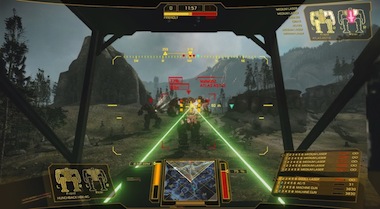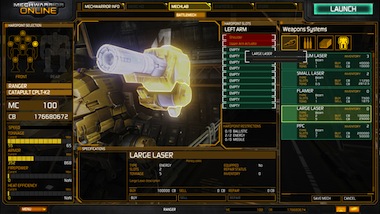Zmak: And I might spend millions of dollars getting to that point, and I roll the dice and hope, versus what’s a service-based model where we’re communicating with the users every day and our content plans don’t span six months. They span three to four months, derived out of the feedback coming from our audience and what they want to see in the game. What are the key features that they’re looking for? What are the elements that they want? What are the social aspects that they’re looking for? And all of those conversations are happening in real time.
 Whether they’re happening directly to us or happening directly to user-to-user on the forums, is part of the wonder of it. Because out of that, we get to derive these ideas that we look at and we go: You know, we have that on the list, we just didn’t realize it was gonna take this turn. We didn’t realize that it would follow this level of importance. We didn’t realize that this really isn’t that important to the player.
Whether they’re happening directly to us or happening directly to user-to-user on the forums, is part of the wonder of it. Because out of that, we get to derive these ideas that we look at and we go: You know, we have that on the list, we just didn’t realize it was gonna take this turn. We didn’t realize that it would follow this level of importance. We didn’t realize that this really isn’t that important to the player.
And [being] able to gauge and then measure that. In my mind, the beauty of the space is 1), it’s been demonstrated as viable in the market place, and 2), the consumers are actively involved in the passion for the IP. They’re actively involved in the passion for the game. They help generate the content creation process that we use for it.
And thirdly, the thing that I look at, that as it continues to evolve and grow, [is] we have an opportunity as both a developer and publisher to respond quickly to those changes. And I think that capability to respond quickly will distinguish anyone in the F2P space. It’s that unique capability to respond to the consumer, respond to the content, and put it out there in a timely fashion that will make or break the folks playing in the industry.
GamesBeat: How did IGP decide it was the right time to bring MechWarrior back? It’s been sitting dormant for so long.
Zmak: I wish I could say there was this wonderful strategy document we’ve been following and it’s just been awesome. Every opportunity falls in a time and a place, and we’ve been remarkably fortunate to be here. And I think that anything other than that would be a statement of ego. I think we have to recognize that the time, the place, and the opportunity for the IP came together at the right time with the right players and the right people involved. And we took the initiative to take advantage of that time and place, and that might be the one thing that we can take credit for.
I think it’s chance and opportunity, and it’s a lot of good fortune on our part.
GamesBeat: You mentioned earlier the maturity of the Korean F2P market. Is that where you see the U.S./Western equivalent heading three to five years from now?
Zmak: When I say the Korean F2P market, you have to recognize that it’ll never be that market. It’ll always be the “North American market,” right? But it’ll evolve, and it’ll grow in its own way here in this space. I think that we’re in one of the most unique times in our industry. I look at retail sales; I look at the market that exists there. I look at console development. I look at PC development. I look at the new platforms coming down the road.
“Love it or hate it, Apple has made $.99 too much.”
And what I see is, basically, our friends over at Apple and our friends in the Android market changing consumer mindsets about what is entertainment. And I’ve used this analogy before: Love it or hate it, Apple’s made $.99 too much. You’ll pay $6 for a cup of coffee, and you’ll love it. But you buy an app for $.99 and you don’t like it? You feel like you got ripped off! We have this perceived value issue that we’re dealing with, and I think that it’s affecting all consumer habits.
We’ve never seen a time in our industry where as many people are playing games as they are today. But it’s diverse. People like to use the word it’s “segmented,” or it’s “fractured,” or it’s all of those things. But the fact of the matter is, yes, it is from a marketing standpoint. But from a social standpoint and from a community standpoint, we’re actually [in] one of the few times in any media where we’re probably the most influential form of entertainment on culture in the world.
And that’s a very powerful place to be. And I look at the markets and go: There will always be a place for consoles. There will always be a place for F2P. And there’s gonna be a place for mobile. And there’s gonna be a place for the other markets. They’ll change and evolve and go through the pains associated with it. But when I look at the North American market, what I see is a consumer that is embracing the entertainment media, interactive media. And I recognize I’m using those buzzwords. But they’re embracing games in a way that they never had before.
We have two generations behind me that’ve never known basically a time without interconnectivity. Four or five years ago, I asked my wife, “How old were you when you got your cellphone?” She laughed, “35.” Because they didn’t exist! It’s a different mindset. It’s a different world. And I think that’s part of what we’re seeing is this evolution of the games is based off this reality of consumer and investment trends, and product trends surrounded by business models that are evolving so rapidly, that much of the old standards don’t apply.
And look at MechWarrior. It’s been in development for less than a year. We have fully playable product. That’s high-quality standards. People are enjoying playing the game. We’ve clearly recognized that it’s not done. Maybe three years from now I’ll say, “Well, we’re done!” But that’s the beauty of the business; that’s the beauty of where we are. Instead of taking $50 million or $60 million dollars and working on it for two years, we take a fraction of that dollar amount and we work on it for a year. We release it to the community, and then we evolve and we grow and we build on it.


